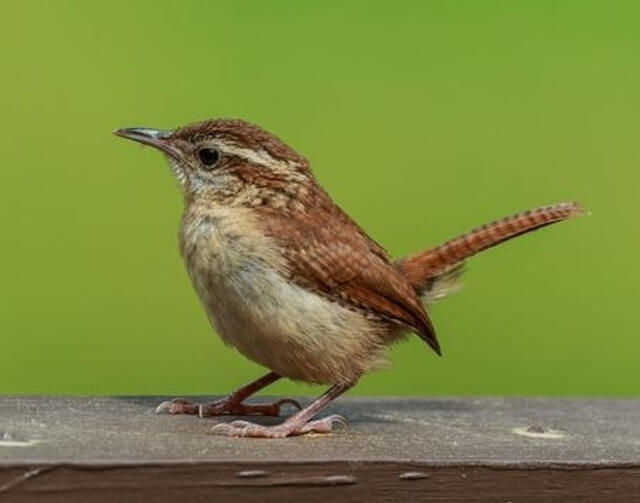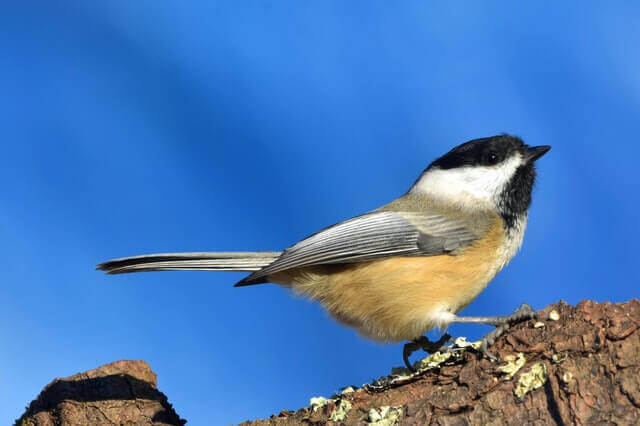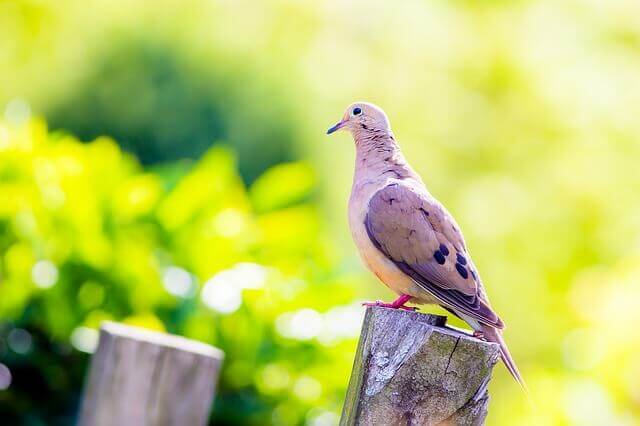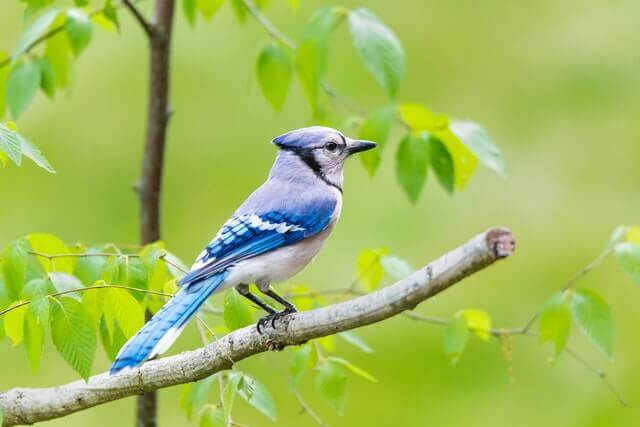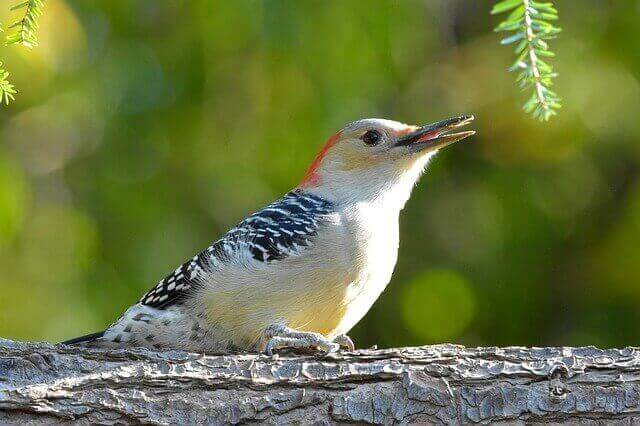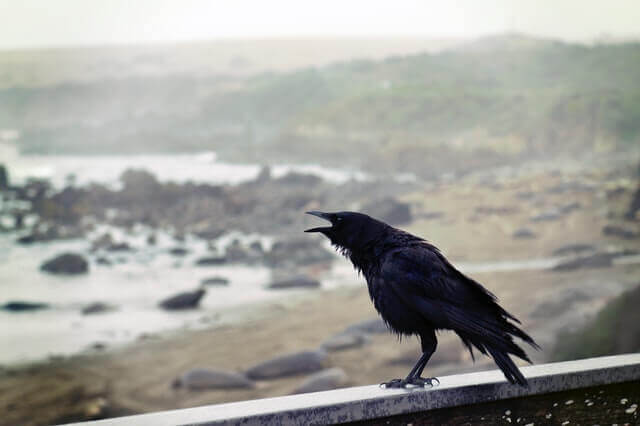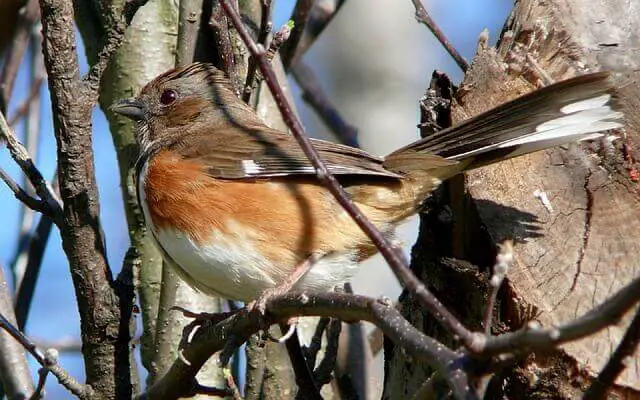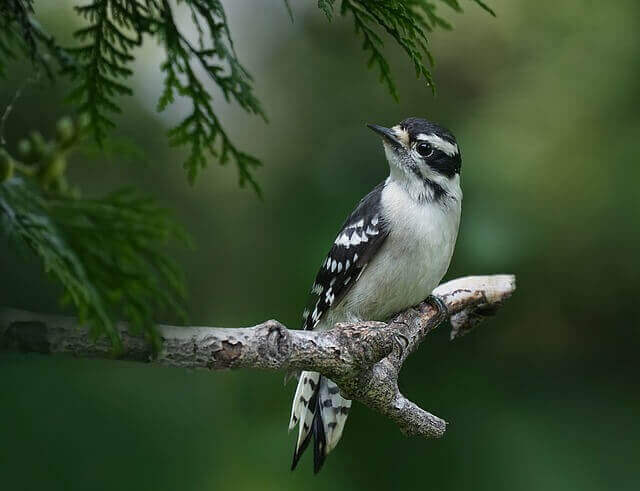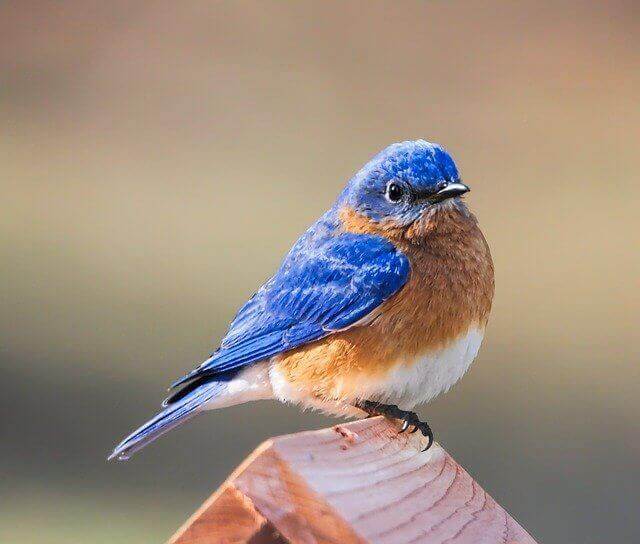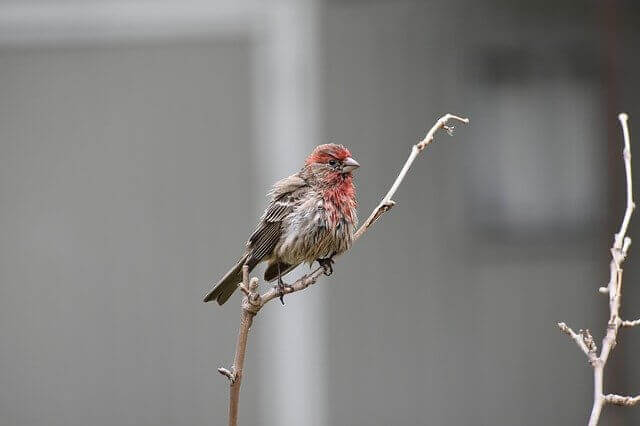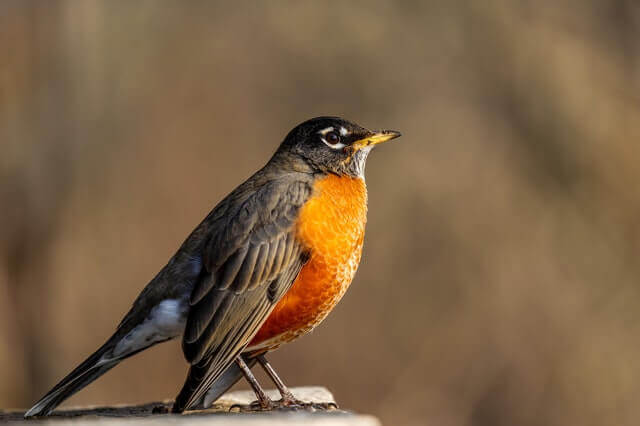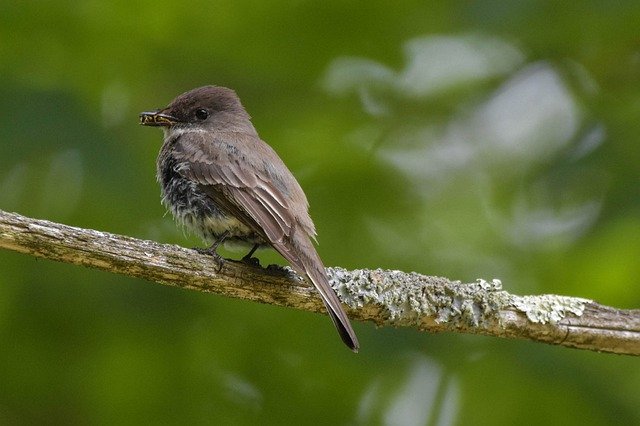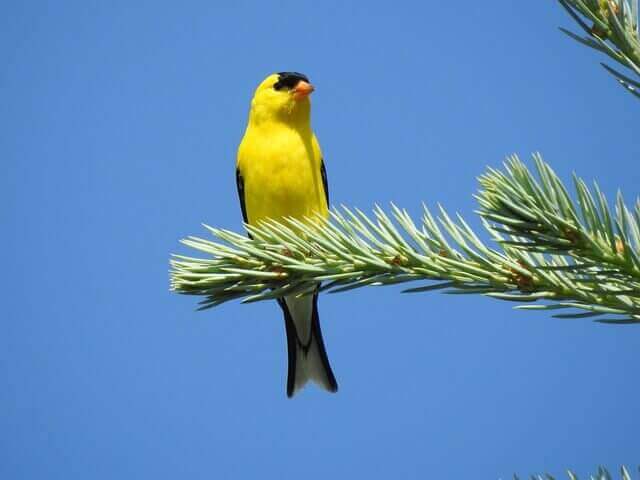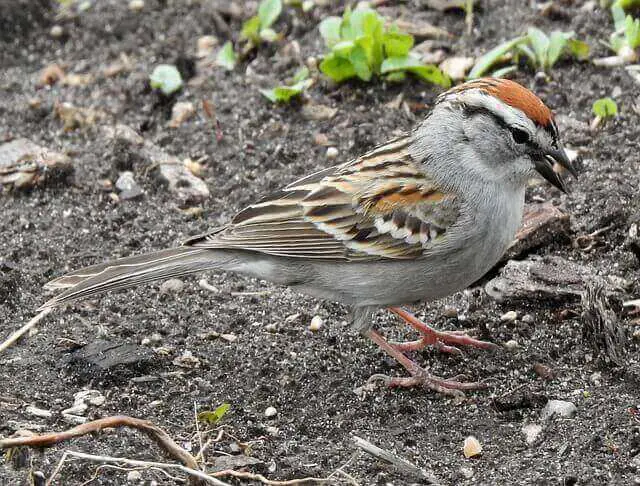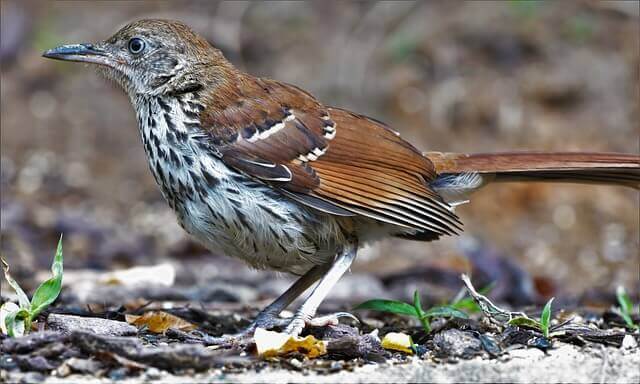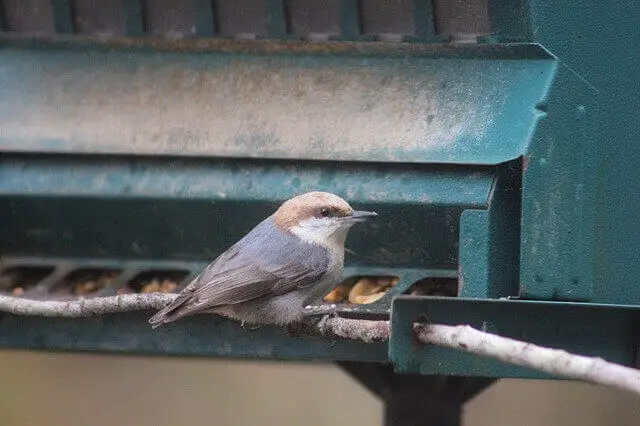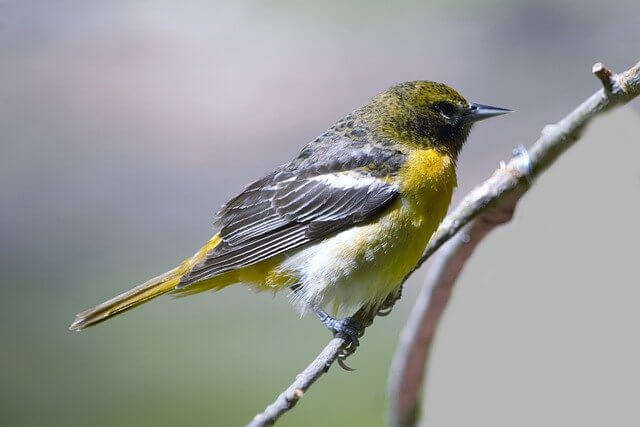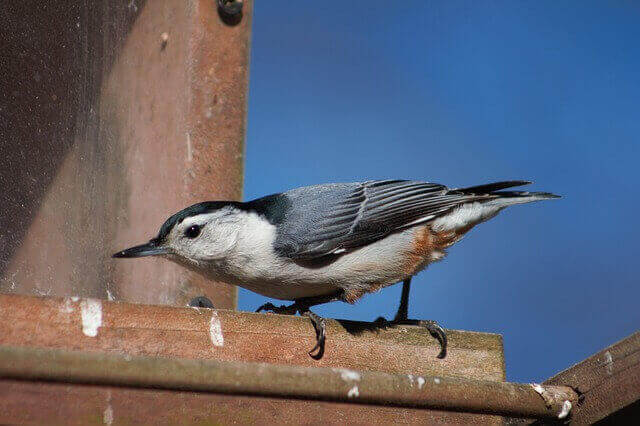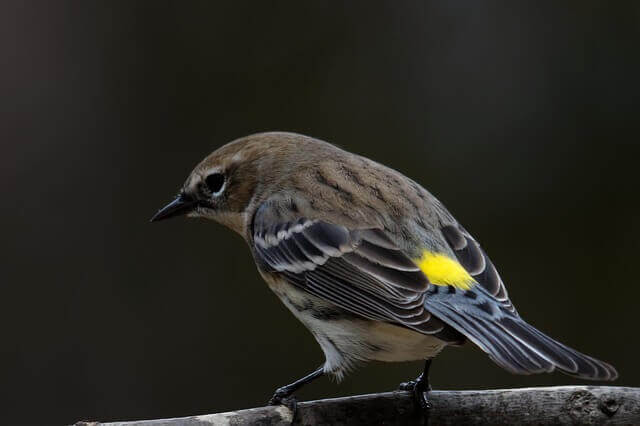Step into the enchanting world of backyard birdwatching in Georgia with our comprehensive guide. This Ultimate Guide highlights the 35 most common birds that frequent Georgia’s yards and gardens, offering insightful details on their habitats, behaviors, and unique attributes.
Whether you’re a budding birder, a nature lover, or simply curious about the feathered visitors in your backyard, this guide provides a captivating glimpse into the avian diversity that enriches Georgia’s landscapes.
Table of Contents
- 1 Common Backyard Birds in Georgia
- 1.1 Northern Cardinal
- 1.2 Carolina Wren
- 1.3 Carolina Chickadee
- 1.4 Tufted Titmouse
- 1.5 Mourning Dove
- 1.6 Blue Jay
- 1.7 Red-bellied Woodpecker
- 1.8 American Crow
- 1.9 Northern Mockingbird
- 1.10 Eastern Towhee
- 1.11 Downy Woodpecker
- 1.12 Eastern Bluebird
- 1.13 House Finch
- 1.14 American Robin
- 1.15 Eastern Phoebe
- 1.16 American Goldfinch
- 1.17 Chipping Sparrow
- 1.18 Brown Thrasher
- 1.19 Brown-headed Nuthatch
- 1.20 Pine Warbler
- 1.21 White-breasted Nuthatch
- 1.22 Yellow-rumped Warbler
- 2 Frequently Asked Questions
- 2.1 What is the largest bird in Georgia?
- 2.2 Are blue jays rare in Georgia?
- 2.3 What is the largest hawk in Georgia?
- 2.4 What falcons live in Georgia?
- 2.5 Do egrets live in Georgia?
- 2.6 Are red cardinals common in Georgia?
- 2.7 What is the smallest bird in Georgia?
- 2.8 What’s the most common bird in Georgia?
- 2.9 How do I identify a bird in Georgia?
- 2.10 What bird is Georgia known for?
- 2.11 What is the rarest bird in Georgia?
- 3 Author
Common Backyard Birds in Georgia
Northern Cardinal
The Northern Cardinal is a medium-sized bird that has the widest range of any North American songbird. The northern cardinal can be found in forested areas, residential yards, gardens and farmlands throughout much of the United States and Canada.
They eat insects such as beetles or ants; fruits like blackberries or cherries; and seeds from weeds such as dandelions. They are typically seen in the winter months in southern states and more northern states during the summer months.
- Frequency: 63.72% (Statistic by: eBird)
- Color: Mostly red with a black mask on the face
- Habitat: woodlands, gardens, parks, backyards, and wetlands
- Range: USA, Canada, Mexico
- Length: 8.2-9.3″ in.
- Weight: 33.0-65.0 grams
- Diet: Fruits, berries, and insects (grasshoppers, beetles, snails, cicadas)
- Family: Cardinalidae
- Genus: Cardinalis
- Maps: Range Map / Sightings Map
- Sounds: Calls and Songs
Related:
- Best Birdhouse for Cardinals 2022 (Tested And Rated)
- 10 Best Bird Feeders for Cardinals (Rated for 2022)
- Where Are Cardinals Found? Best Spots to Look!
Carolina Wren
The Carolina Wren is a small, round bird that weighs less than an ounce. It is primarily found in the Eastern United States, with populations extending to the Rocky Mountains and as far south as Mexico. The Carolina Wren’s habitat includes fields, forests, urban areas and woodlands.
They can be seen all year long in this region of North America, but migrate to Central America for winter from October through March. Carolina’s wrens are omnivores, which means they eat both plants and animals.
- Frequency: 52.43%
- Color: Reddish-brown upper and buff-orange color under, with a white chin, throat. White stripe on the eyebrow.
- Habitat: woodlands, gardens, parks, backyards, and wetlands
- Range: USA, Canada, Mexico
- Length: 5.0-5.5″ in
- Weight: 18-23 g
- Diet: Fruits, berries seeds, and insects (Caterpillars, beetles, true bugs, grasshoppers, crickets, spiders, millipedes, snails)
- Family: Troglodytidae
- Genus: Thryothorus
- Maps: Range Map / Sightings Map
- Sounds: Calls and Songs
Related: How to Attract Wrens to your Backyard? (Expert’s Guide)
Carolina Chickadee
One of the more popular states for Carolina Chickadees is Georgia. The Carolina Chickadee is usually found in tall trees, though some occur in shacks and arboreal perches.
It’s also found in fields and swamps, on floodplains and rivers, and in grassy areas along roadways and in urban settings. Its range is wide and covers the Southeast from Alabama to Virginia. In the winter months, it can be found in marshy areas along the southern parts of its range.
- Frequency: 48.13%
- Color: Black cap and throat with white cheeks. Light gray wings, back, and tail.
- Habitat: Deciduous forests, suburbs, parks, backyards
- Range: USA ( Texas, Florida, New Jersey, and Kansas)
- Size: 4.5 – 5.1″ inches long
- Weight: 9 – 12 grams
- Diet: Insects, berries, seeds
- Family: Paridae
- Genus: Poecile
- Maps: Range Map / Sightings Map
- Sounds: Calls and Songs
Related: Carolina Chickadees – 9 Best Ways To Attract Them Fast!
Tufted Titmouse
The Tufted Titmouse is a small bird in the tit family. It ranges from Eastern North America to Southern Canada and Western United States, with some populations even going into Central America. The Tufted Titmouse can be found in forests, scrublands, orchards and other open habitats with scattered trees.
They will feed on insects that they find on leaves and branches as well as seeds, and berries that have fallen from nearby trees. Tufted Titmice migrate south for the winter as far as South America or Mexico but will occasionally stay put if there is an unusually mild winter season.
- Frequency: 47.09%
- Color: Gray upper, white front, a tufted gray crest on the head
- Habitat: Deciduous forests, river basin, backyards, swamps
- Range: Canada, USA, and Mexico
- Size: 5.5 – 6.4″ inches
- Weight: 18 – 26 grams
- Diet: Nuts, insects, berries, seeds small fruit, and snails
- Family: Paridae
- Genus: Baeolophus
- Maps: Range Map / Sightings Map
- Sounds: Calls and Songs
Related: How to Attract Tufted Titmouse to my Yard
Mourning Dove
The Mourning Dove is a common bird that can be found in the United States and Canada. The Mourning Dove’s range includes North America, Central America, Caribbean Islands, southern South America and Mexico.
They live primarily in forests, but are also known to inhabit farmlands and deserts. The diet of the mourning dove consists mainly of seeds from grasses, weeds, small fruits such as grapes or berries when available, as well as earthworms or other invertebrates.
Their migration pattern varies depending on location: some migrate south during winter, while others move northward or stay put year round.
- Frequency: 44.03%
- Color: Light gray-brown and lighter and pinkish below. The wings have black spots.
- Habitat: Open habitats, urban areas, farms, prairie, grassland, wooded area
- Range: USA, Canada, Mexico, Central America, Greater Antilles
- Size: 12″ inches length
- Weight: 112 – 170 grams
- Diet: Rapeseed, corn, millet, safflower, sunflower seeds, pokeberry, sesame, and wheat.
- Family: Columbidae
- Genus: Zenaida
- Maps: Range Map / Sightings Map
- Sounds: Calls and Songs
Related: Facts About Mourning Doves – 10 Things You Need To Know!
Blue Jay
The Blue Jay is a very common bird in North America. The jay lives across Canada and the United States of America, and its range also extends into Central America. This bird’s habitat includes woodlands, meadows, gardens, farmland and urban areas.
It eats insects such as beetles or grasshoppers; it will also eat berries, fruit, nuts from acorns and hazelnuts that are found on the ground; they will even try to steal food from other birds if given the chance! Some blue jays migrate to find food sources during winter months or dry seasons, when their habitat becomes sparse for food.
- Frequency: 42.54%
- Color: Blue crest on the head, wings, back, and tail, and has a white face and belly
- Habitat: Deciduous and mixed forests, mixed woodlands, backyards, parks
- Range: Southern Canada, Eastern and Central United States, Florida and Texas
- Size: 8 – 12″ inches
- Weight: 70 – 100 grams
- Diet: Nuts, seeds, caterpillars, grasshoppers, and beetles
- Family: Corvidae
- Genus: Cyanocitta
- Maps: Range Map / Sightings Map
- Sounds: Calls and Songs
Related:
- How to Attract Blue Jays to your Yard?
- 15 Best Bird Feeders For Blue Jays (Tried & Tested 2022)
- Do Blue Jays Migrate? The Truth
- What do Blue Jay Eat – All The Facts
Red-bellied Woodpecker
The Red-bellied Woodpecker is found in eastern North America, where it lives in forests and deciduous woodlands. The Red-bellied Woodpecker has a large range, from the Atlantic coast to the Rocky Mountains and south to Mexico. Their habitat includes dense forests, swamps, orchards, parks and gardens. It nests in tree cavities or abandoned nests of other birds.
These birds feed on insects such as ants, beetles and caterpillars but also like nuts, berries and fruit. The Red-bellied Woodpecker migrates for winter; they migrate south in search of warmer weather.
- Frequency: 42.26%
- Color: Gray on body and face and underparts. Black and white pattern on wings, back, and tail.
- Habitat: Forests, backyards
- Range: Southern Canada, Eastern United States, Florida
- Size: 9 – 10.6″ inches long
- Weight: 56 -91 grams
- Diet: Insects, tree frogs, eggs of small birds, oozing sap, and small fish.
- Family: Picidae
- Genus: Melanerpes
- Maps: Range Map / Sightings Map
- Sounds: Calls and Songs
Related: How to Attract Red-bellied Woodpeckers to your Yard?
American Crow
The American Crow’s range extends from the eastern coast of Canada to the western coast of Mexico. They inhabit most types of terrain and are able to adapt easily to many habitats. American Crows inhabit many habitats such as woodlands, fields and suburban areas.
American Crows can be found year round near bodies of water and feed on a variety of small animals such as fish, amphibians, reptiles, earthworms and insects. In addition to these invertebrates they also eat fruit or nuts that have fallen from trees or on the ground.
- Frequency: 39.49%
- Color: Black
- Habitat: Open country, farms, parks, woodlands, towns, cities
- Range: Canada, USA, Mexico
- Size: 16-21″ inches
- Weight: 315-620 g
- Diet: invertebrates, carrion, seeds, eggs fish, grains, mice, frogs, and other small animals.
- Family: Corvidae
- Genus: Corvis
- Maps: Range Map / Sightings Map
- Sounds: Calls and Songs
Related: How To Attract Crows To Your Backyard: Expert Tips!
Northern Mockingbird
The Northern Mockingbird is a medium-sized songbird in the Mimidae family. It is found in North America, Central America and the Caribbean. The range of this bird extends from southern Canada to northern South America. Northern mockingbirds inhabit open areas with trees or bushes for nesting and perching such as parks, yards, agricultural fields, pastures and grasslands.
These birds prefer habitats with scattered shrubs, but avoid heavily forested regions. They are generally found at low elevations. These birds have been seen migrating southward during winter months from Canada down to Mexico.
- Frequency: 37.78%
- Color: Gray upper with white underparts. Black and white wing bars.
- Habitat: Forested areas, parks, and gardens
- Range: Southeastern Canada, USA, Northern Mexico, Cayman Islands, Greater Antilles
- Size: 8.0 – 11″ inches long
- Weight: 40 – 58 grams
- Diet: Berries, fruits, seeds, arthropods, earthworms, and occasionally lizards
- Family: Mimidae
- Genus: Mimus
- Maps: Range Map / Sightings Map
- Sounds: Calls and Songs
Related:
- How to Attract Mockingbirds to your Yard? (Expert Tips)
- Birds That Look Like Mockingbirds: How to Identify Them?
Eastern Towhee
The Eastern Towhee is a small songbird found in the eastern half of North America. The Towhee’s range includes south-central Canada, most of the United States east of the Rocky Mountains, except for much of New England, northern Ohio Valley region and northwest Florida. Eastern Towhees inhabit open areas including parks, farms, lawns and other suburban habitats.
They eat mostly insects, but will also consume other invertebrates such as spiders, snails, worms and centipedes. Eastern Towhees have one of the longest migrations for birds that stay within North America – they fly to Central America during winter months before returning to their breeding grounds in springtime.
- Frequency: 35.04%
- Color: A Black head, upper body, and tail, reddish-brown sides, a white belly, and a long dark tail with white edges
- Habitat: Deciduous forests and thickets, roadside, grasslands, backyards, parks
- Range: Eastern USA and Canada
- Size: 6.8 – 9.1″ long
- Weight: 32 – 53 grams
- Diet: insects and other invertebrates occasionally small amphibians, snakes, and lizards
- Family: Passerellidae
- Genus: Pipilo
- Maps: Range Map / Sightings Map
- Sounds: Calls and Songs
Related: How to Attract Towhee to your Backyard? Expert Tips!
Downy Woodpecker
Downy Woodpeckers are a common bird found in North America. These birds range from the northern tip of Canada to Central America, and have been spotted as far south as Brazil. They live in forests, woodlands, orchards, parks and even urban areas.
Their diet consists mainly of insects, but they also eat seeds, berries and fruit when they can find them. Downy Woodpeckers migrate during the winter months when food is scarce in their area and return to these same habitats.
- Frequency: 33.78%
- Color: Black with a white throat, belly, and back. White spots on wings
- Habitat: Deciduous forests and thickets, roadside, grasslands, backyards, parks
- Range: Canada, USA, and Mexico
- Size: 5.5 – 7.1″ inches in length
- Weight: 20 – 33 grams
- Diet: Mostly insects and beetles and ants, also gall wasps, caterpillars
- Family: Picadae
- Genus: Dryobates
- Maps: Range Map / Sightings Map
- Sounds: Calls and Songs
Related: How to Attract Downy Woodpeckers to Your Yard? (Easy!)
Eastern Bluebird
Eastern bluebirds are native to North America and their range includes the eastern United States. Their habitat is primarily woodlands, farmlands, orchards, suburbs and parks. They migrate south in the winter and live throughout Central America in warmer climates.
Eastern bluebirds feed on a variety of insects including crickets, grasshoppers, beetles and caterpillars, but also eat berries, seeds from trees such as acorns when they’re available. Eastern Bluebirds have a range from Newfoundland to South Carolina, with their southernmost populations wintering in Florida or Mexico.
- Frequency: 32.22%
- Color: A blue head, back, and wings with a reddish-brown breast.
- Habitat: Open woodlands, farmlands, and orchards.
- Range: Southern Canada to the Gulf states, East of the Rockies and south to Arizona to Nicaragua
- Size: 5.5 – 7.1″ inches in length
- Weight: 20 – 33 grams
- Diet: insects and other invertebrates
- Family: Turdidae
- Genus: Sialia
- Maps: Range Map / Sightings Map
- Sounds: Calls and Songs
Related: How to Attract Eastern Bluebirds to your Yard (Explained)
House Finch
House Finches are a species of small bird that live in the United States and Canada. The range for House Finches includes Southern Canada, all the continental United States excluding Alaska, and Mexico. These little birds have a fairly wide range and inhabit many habitats such as woodland edges, wetlands, open woodlands, shrubby areas, but they can also be found near human development.
They are primarily seed-eaters, but also insects such as beetles or ants when they’re available. They migrate seasonally from southern parts of their range northward to find food when it is scarce in winter months.
- Frequency: 29.33%
- Color: Reddish face and upper breast, brown streaks on back, belly, and tail.
- Habitat: urban and suburban areas, backyards, edges, yards, and parks
- Range: Canada, USA, Mexico
- Size: 5 – 6″ inches
- Weight: 16 – 27 grams
- Diet: Aphids, grains, seeds, berries, nettle, dandelion, sunflower
- Family: Fringillidae
- Genus: Haemorhous
- Maps: Range Map / Sightings Map
- Sounds: Calls and Songs
Related: How to Attract House Finch to your Yard
American Robin
The American Robin is a small songbird, native to North America. They are omnivores and their diet includes worms, insects, fruit, invertebrates, seeds and occasionally eggs or nestlings.
It can be found throughout North America and parts of South America in open habitats such as parks, gardens, meadows, marshes, woodlands and farmlands. In the winter months, many robins migrate south, where they may spend the winter in warmer climates like Florida.
- Frequency: 29.18%
- Color: Mostly brown on the back with an orange-colored breast
- Habitat: Wooded areas, backyards, parks, fields
- Range: USA, Canada, Mexico
- Size: 12 – 16″ inches in length
- Weight: 72 – 95 grams
- Diet: Fruits, berries, and insects (earthworms, beetles, caterpillars)
- Family: Turdidae
- Genus: Turdus
- Maps: Range Map / Sightings Map
- Sounds: Calls and Songs
Related:
- Interesting American Robin Fun Facts
- How To Attract Robins To Your Yard – 7 Best Tips!
- 5 Best Bird Feeders For Robins (Tested & Rated For 2022)
- 9 Birds That Look Like Robins But Aren’t (Photos, & Info)
Eastern Phoebe
The Eastern Phoebe can be seen in all the southern parts of North America, especially in the west coast states of California, Arizona, New Mexico and Texas. In the south-eastern United States it is found mostly along the east coast from central Florida to north Texas.
It is very common all over the world where the tropical forests and dry areas are abundant. The Eastern Phoebe birds feed primarily on small fruits such as acacias, date palms, figs, grapes and other citrus fruits. They are quite noisy during their courtship dances.
- Frequency: 26.28%
- Color: Gray-brown upper, gray breast and underbody, white throat
- Habitat: Farmland, parks, and gardens
- Range: Southern USA and Mexico
- Size: 5.5 – 6.7″ inches long
- Weight: 16 – 21 grams
- Diet: Insects and berries
- Family: Tyrannidae
- Genus: Sayornis
- Maps: Range Map / Sightings Map
- Sounds: Calls and Songs
American Goldfinch
The American Goldfinch is a small songbird in the finch family. It is a migratory bird that breeds in North America, wintering primarily in Central America. They are also found as far south as northern South America and north to the southern United States.
These birds prefer habitat such as woodland edges or areas with tall grasses, deciduous forests, but can also be found near coniferous trees or scrublands. American Goldfinches are primarily seed-eaters; they feed on weed seeds such as thistle or milkweed, but also include insects (particularly during breeding season) and wild fruit.
- Frequency: 26.23%
- Color: Face, neck, and underside are yellow, black wings with white bars
- Habitat: Deciduous forests and thickets, roadside, grasslands, backyards, meadows
- Range: Canada, USA, and Mexico
- Size: 4.3 – 5.5″ inches length
- Weight: 12 -18 grams
- Diet: Grass, dandelions, chickweed, sunflowers and ragweed, thistle, red alder, birch, spruce seeds
- Family: Carduelinae
- Genus: Spinus
- Maps: Range Map / Sightings Map
- Sounds: Calls and Songs
Related: American Goldfinch Interesting Facts
Chipping Sparrow
The Chipping Sparrow is a small songbird in the family of sparrows. It breeds across most of North America, Central America and southern Canada from coast to coast. This species prefers habitats such as woodland edges, hedgerows, old fields and residential yards with trees and shrubs.
This bird’s diet consists mainly of insects such as beetles, caterpillars, grasshoppers and crickets, but it also eats seeds and berries when they are available. It migrates during the winter months to spend its time in more southern regions, where food is plentiful and temperatures are warmer.
- Frequency: 23.92%
- Color: Rust-colored upperparts, gray head, and underparts with a reddish cap on the head
- Habitat: Coniferous forests, woodland, farmland, parks, and gardens
- Range: Southern USA and Mexico
- Size: 4.7 – 5.9″ inches
- Weight: 11 – 16 grams
- Diet: Mostly seeds, spiders
- Family: Passerellidae
- Genus: Spizella
- Maps: Range Map / Sightings Map
- Sounds: Calls and Songs
Related: How to Attract Sparrows to your Backyard
Brown Thrasher
The Brown Thrasher is a small songbird that can be found throughout the eastern United States. They inhabit most of their range year-round, but during migration they may move to southern states like Florida and Texas for winter.
It has a variety of habitats including woodlands, forests, marshes and coastal areas. Their diet consists mostly of insects, although they will also eat fruit and berries in the summer months.
- Frequency: 23.83%
- Color: reddish-brown upper with a white chest with patterned markings on its chest
- Habitat: Woodland edges, thickets and dense brush, backyards, parks
- Range: USA and Canada, and Mexico
- Size: 9.0 – 12″″ inches length
- Weight: 60 – 90 grams
- Diet: Insects, berries, nuts and seeds, earthworms, snails, lizards and frogs
- Family: Mimidae
- Genus: Toxostoma
- Maps: Range Map / Sightings Map
- Sounds: Calls and Songs
Brown-headed Nuthatch
The Brown-headed Nuthatches range from the southern United States to Canada and as far west as Alaska. They inhabit both deciduous and coniferous forests, parks, backyards, cemeteries, orchards and gardens. Their diet consists mostly of insects that they find on tree trunks or branches but also include some seeds and berries.
These birds have a long migration pattern, going south for winter months and then back north again during spring time when there are more insects to eat.
- Frequency: 23.61%
- Color: brown headband, bluish-gray wings and back, and a cream-colored underside
- Habitat: Deciduous forests, conifers, roadside, rivers, backyards, parks
- Range: Southern Canada, USA
- Size: 3.5 – 4.3″ inches long
- Weight: 10 – 12 grams
- Diet: Insects and pine seeds
- Family: Sittidae
- Genus: Sitta
- Maps: Range Map / Sightings Map
- Sounds: Calls and Songs
Related: How to Attract Nuthatches to your Backyard
Pine Warbler
The Pine Warbler is a common, small songbird in North America. They are mainly found on the Eastern side of the United States and Canada. The pine warblers range includes southern Ontario, Quebec, Nova Scotia and New Brunswick. Pine Warblers eat insects that they find on tree branches or while foraging on the ground for food.
This bird has been observed eating both flying and stationary insects such as aphids, beetles, butterflies, moths and dragonflies among others. It migrates south during the winter months from the southern United States to Central America or South America
- Frequency: 23.04%
- Color: (Female)White belly, two white wing bars, with yellow lines over their eyes. (Male: Dark yellowish-green upper parts and yellow throats and breast. Long pointed bill.
- Habitat: Eastern pine forests, parks, and backyards
- Range: Eastern North America, Mexico, Caribbean
- Size: 5.0 – 5.75″ inches
- Weight: approx. 12 grams
- Diet: Insects, seeds and berries
- Family: Parulidae
- Genus: Parula
- Maps: Range Map / Sightings Map
- Sounds: Calls and Songs
White-breasted Nuthatch
The White-breasted Nuthatch is a small songbird that inhabits woodlands across North America. It is the only species of nuthatch found in Canada and has a range extending from Alaska to Newfoundland, as well as parts of the Rocky Mountains.
White-breasted Nuthatches are also known for their unusually large appetite, which often causes them to steal food from other birds’ nests while they’re feeding chicks. They feed mostly on insects found on the bark of trees, but also eat seeds, nuts and berries if available.
- Frequency: 22.55%
- Color: A White face, flanks, and chest. It has a black cap on its head a bluish-gray upper and a brown belly
- Habitat: Deciduous forests, conifers, roadside, rivers, backyards, parks
- Range: Southern Canada, USA
- Size: 5.9″ inches
- Weight: 20 grams
- Diet: Acorn nuts, hickory nuts, ants, caterpillars, scale insects, pine weevils
- Family: Sittidae
- Genus: Sitta
- Maps: Range Map / Sightings Map
- Sounds: Calls and Songs
Related: How to Attract Nuthatches to your Backyard
Yellow-rumped Warbler
The yellow-rumped warbler is a common bird found in North America. They can be found all over the United States and Canada, but are absent from Alaska. The yellow-rumped warblers range stretches from California to Minnesota and east to the Atlantic coast of New England.
They inhabit a variety of habitats including forest edges, shrubby areas, and parks. They primarily eat insects during the summer months and fall months, as well as berries during the winter time when they’re not migrating
- Frequency: 20.01%
- Color: Yellow patches on the crown, flanks, rump & blackish-blue streaks on the back, breast, and wings
- Habitat: Deciduous forests and thickets, roadside, grasslands, backyards
- Range: U.SA, Canada, Mexico, Central America, and the Caribbean
- Size: 4.7 – 5.9″ inches
- Weight: 10 – 18 grams
- Diet: grasshoppers, gnats, aphids, caterpillars, wasps, beetles, spiders, berries,
- Family: Parulidae
- Genus: Setophaga
- Maps: Range Map / Sightings Map
- Sounds: Calls and Songs
Related: How to Attract Warblers to you Yard?
These backyard birds below have a frequency of less than 20% year-round
- Song Sparrow – 19.21% Frequency
- Red-winged Blackbird – 17.40%
- Ruby-crowned Kinglet – 15.34%
- Pileated Woodpecker – 13.70%
- Common Grackle – 13.51%
- White-throated Sparrow – 13.49%
- Blue-gray Gnatcatcher – 13.22%
- Ruby-throated Hummingbird – 12.92%
- Northern Flicker – 12.83%
- European Starling – 12.64%
- Brown-headed Cowbird – 11.72%
- White-eyed Vireo – 11.22%
- Gray Catbird – 10.84%
Frequently Asked Questions
What is the largest bird in Georgia?
The largest bird in Georgia is the Great-Horned Owl. This bird has an average length of up to 2 feet and a wingspan of up to 5 feet. The average weight of a Great-Horned Owl is 3 pounds with females being larger than males.
Are blue jays rare in Georgia?
Some people think that blue jays are rare in Georgia, but they are actually very common. They live throughout the state, except for a few mountainous areas. The frequency at which blue jays can be found throughout Georgia is around 42%.
What is the largest hawk in Georgia?
The largest hawk in Georgia is the Red-tailed Hawk. The average weight of a Red-tailed Hawk is 2.5 pounds and can measure up to 2 feet long with a wingspan of up to 4.5 feet wide.
What falcons live in Georgia?
There are 3 types of falcons that live in Georgia. Peregrine Falcon, American Kestrel, and Merlin. All three species can be found throughout the state year-round, but may shift to different habitats during breeding season or as temperatures change during winter months.
Do egrets live in Georgia?
Yes, egrets live in Georgia. There are two types of egrets that live in the state: The Great Egret and the Snowy Egret. They live near freshwater habitats like marshes and ponds. It’s very common to see them perched on tree branches waiting for prey.
Are red cardinals common in Georgia?
Red Cardinals are the most common type of bird found in Georgia, with a 63.72% frequency of occurrence. They can be found all over the state.
What is the smallest bird in Georgia?
The calliope hummingbird is the smallest bird in Georgia, measuring 3″ inches in length with a wingspan of 4-4.5″ inches, and a weight of 2-3 grams.
What’s the most common bird in Georgia?
The most common bird in Georgia is the Northern Cardinal. They are found in all 159 counties in the state and make up 64 percent of all bird observations made during surveys. Other common birds in Georgia include the Carolina Wren, Carolina Chickadee, Tufted Titmouse, Blue Jay, Red-bellied Woodpecker, American Crow, Northern Mockingbird and Eastern Towhee.
How do I identify a bird in Georgia?
Identifying a bird in Georgia can be a challenge due to their varied appearances and habitats, but the best way to identify a bird is by its features and plumage. Each species has characteristic features, so it is important to study each one carefully before making any assumptions about the bird’s identity.
What bird is Georgia known for?
The bird known as the Brown Thrasher is the state bird of Georgia. This bird is found throughout the state, but is especially common in the Appalachian Mountains. This bird has a very distinctive appearance with its brown plumage and white plumage. While not as well known as some other birds in Georgia, the Brown Thrasher is an important part of the natural landscape.
What is the rarest bird in Georgia?
The rarest bird in Georgia is the saffron finch. This bird can be found at a frequency of 0.0001 percent of occurrence in the state. The saffron finch is a tropical bird that is native to South America. This bird is very small, has a bright yellow plumage.



